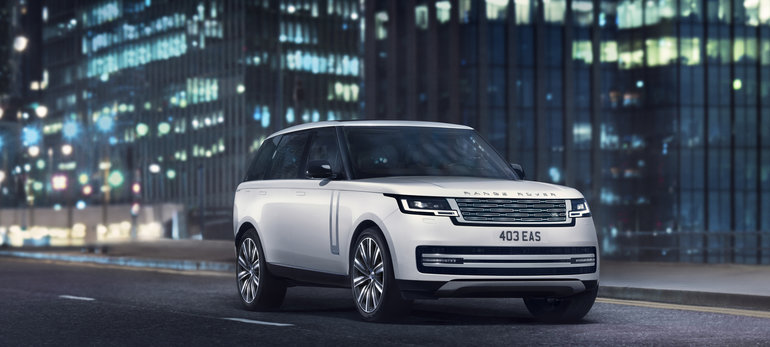2023 Range Rover vs 2023 Range Rover Sport: revolution and evolution
March 11 2022,

When it comes to the Range Rover, you know you're in the presence of excellence. This model, whose origins date back to 1948, has only been refined over the decades, so much so that today it is a singular and extraordinary product.
It is so popular that it has given birth to variants over the years, including the Sport version. Since the two models have always looked alike, it has sometimes been difficult to differentiate them. That's getting easier with the arrival of a new generation.
Let's see how we can go about recognizing one model or the other.
The Range Rover
The new 2023 Ranger Rover will have a sleeker look than ever. The surfaces that make it up seem to have been sculpted by the wind. It has a very strong image. Still available in two wheelbase lengths, there are significant changes in the front end, but especially in the rear. There, we notice a completely different signature with the lights that take the shape of a wide and extended letter N; a horizontal band that runs the width of the vehicle, held by two vertical bars at the ends of the model.
Then, a variant more focused on performance will be born, the SV. The latter will offer distinct styling (especially on the grille), in addition to giving buyers an extraordinary choice of customization.
It's a revolution in design, but a revolution in continuity.
The Range Rover Sport
The Range Rover Sport hasn't been officially unveiled yet, but camouflaged models have been lining the roads near the test centers, so we've been able to see versions on the road. What we were able to deduce is that this model, which is a little shorter than its big brother, keeps a more traditional design at the back. That's how you can tell them apart, because otherwise the new Range Rover signature will migrate to the brother.
Powertrain harmony
Where things should be similar, because after all, the Ranger Rover Sport benefits from a tweaked version of the platform that serves the Range Rover, is under the hood. We expect to find the same powertrain options.
Of course, the V8 will still be there, but as with the larger model, its size should be reduced from 5.0 to 4.4 liters. With 523 horsepower and 553 pound-feet of torque expected, the performance should be more than interesting.
There will also be a 3.0-liter turbocharged 6-cylinder offering 395 horsepower and 434 lb-ft of torque. And, hopefully, we can expect to find the plug-in hybrid version of the latter on the menu. It will give us a gain in power (434 horsepower with the big Range), but above all, an electric range. We'll have to wait for official figures, but with a 38.2 kWh lithium-ion battery, it could be around 70 kilometers.
As for the interior and driving experience, both models will continue to offer what we love about a Ranger Rover: refinement, luxury, comfort and sportiness.





